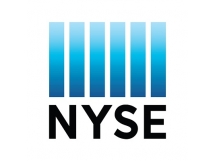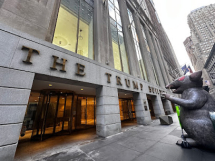The New York Stock Exchange traces its origins to the Buttonwood Agreement signed by 24 stockbrokers on May 17, 1792, as a response to the first financial panic in the young nation. It set rules for how stocks could be traded and established set commissions. The Agreement aimed to promote public confidence in the markets and to ensure that deals were conducted between trusted parties.
Though the Buttonwood Agreement marks the official founding of the NYSE, the Exchange traces its roots back to the 1600s and the foundation of the U.S. Capital Markets. In 1624, the Dutch founded New Amsterdam on the southern end of Manhattan and built a stockade from which the street derives its name; running east from what is now Broadway downhill to the East River. The Compromise of 1790 cemented Wall Street’s role as the nation’s financial capital. The agreement allowed Alexander Hamilton, the United States first Secretary of the Treasury, to implement his fiscal policy of paying Revolutionary War debt using federally issued bonds. Hamilton’s economic and financial vision included federal assumption of the debt from the Revolutionary War, creation of a central bank, and support for indigenous manufacturing. Together, these laid the framework for a strong economy that unleashed free enterprise, entrepreneurship and credit that enabled markets and private institutions like the NYSE to flourish.
In the Exchange’s early years, stock trading continued on an informal basis in nearby coffeehouses where merchants typically gathered. By 1817, the stock market was active enough to encourage the brokers to create a formal organization. A constitution was adopted on March 8, 1817, creating the New York Stock & Exchange Board, the forerunner of today’s NYSE. From the beginning, regulations governed trading. The constitution spelt out detailed rules for the transaction of business and imposed fines to keep disorderly brokers in check. The new stock exchange rented a room at 40 Wall Street where the brokers gathered twice a day to trade a list of 30 stocks and bonds. From the podium the president called out the name of each security in turn, while the brokers shouted bids and offers from the chairs assigned to them. This was the origin of the term “seat” which, ever since, has signified a membership on the NYSE.
The number and variety of securities traded at the NYSE steadily increased as America grew. States and municipalities issued bonds to finance the construction of turnpikes, canals, and bridges. Banks, insurance companies and railroads issued stock to raise the necessary capital to develop and expand. By the end of the Civil War, more than 300 different stocks and bonds were traded at the NYSE. The Exchange moved into its first permanent home – on a portion of its present Broad Street site – in 1865.
Just a few years later, increasing trading volumes inspired the NYSE to switch from the old method of trading to a new system of simultaneous trading in all stocks in a continuous market. Stocks were assigned to specific locations – trading posts – and brokers abandoned their seats to roam about the large open trading floor to trade directly with one another in whatever stock they chose.
The introduction of the stock ticker in 1867 revolutionized market communications by making it possible to quickly transmit market information across the United States, significantly narrowing the gap between Wall Street and Main Street. When telephones were installed at the NYSE in 1878, the market became even more efficient, and on December 15, 1886, trading volume topped 1 million shares for the first time.
One of the most familiar images of the NYSE, the loud ringing of a bell signaling the opening or closing of the day’s trading, was first used at the Exchange in the 1870s with the advent of continuous trading. Critical to ensuring orderly functioning of the marketplace, the original bell of choice was a Chinese gong.
As the stock market continued to grow, the NYSE in 1903 moved into a new building with a much larger Trading Floor, designed by George B. Post. Post designed an impressive interior space, with paneled Georgian marble walls, huge windows and a gilded ceiling that stands four stories above traders’ heads. The statuary pediment titled, “Integrity Protecting the Works of Man” was designed by the eminent sculptor, John Quincy Adams Ward. Today, the NYSE building is one of the most exclusive and sought-after event spaces in New York City, poised at the center of global financial markets.
When the current NYSE building opened in 1903, the gong was replaced by a brass bell — electrically operated and large enough to resonate throughout the voluminous main trading floor. Today, each of the four trading areas of the NYSE has its own bell, operated synchronously from a single control panel.
Modulating the temperature of the open-air space stretching nearly 100 feet above the Trading Floor required the services of engineer Alfred Wolff. Wolff designed and installed three ammonia-absorption machines, each with a cooling capability equivalent to one hundred and fifty tons of ice. This industrial feat made the NYSE the first air-conditioned building in North America. In addition, the room had some of the newest trading technologies including modern tickers, telephones, and a pneumatic tube system to send orders and market data throughout the building.
Trading Floor and office space were expanded further in 1922 with construction of the 11 Wall Street addition. The trading posts, dotted through the center of the room began as simple signposts, but expanded over time. The NYSE also held




 4.0
4.0


